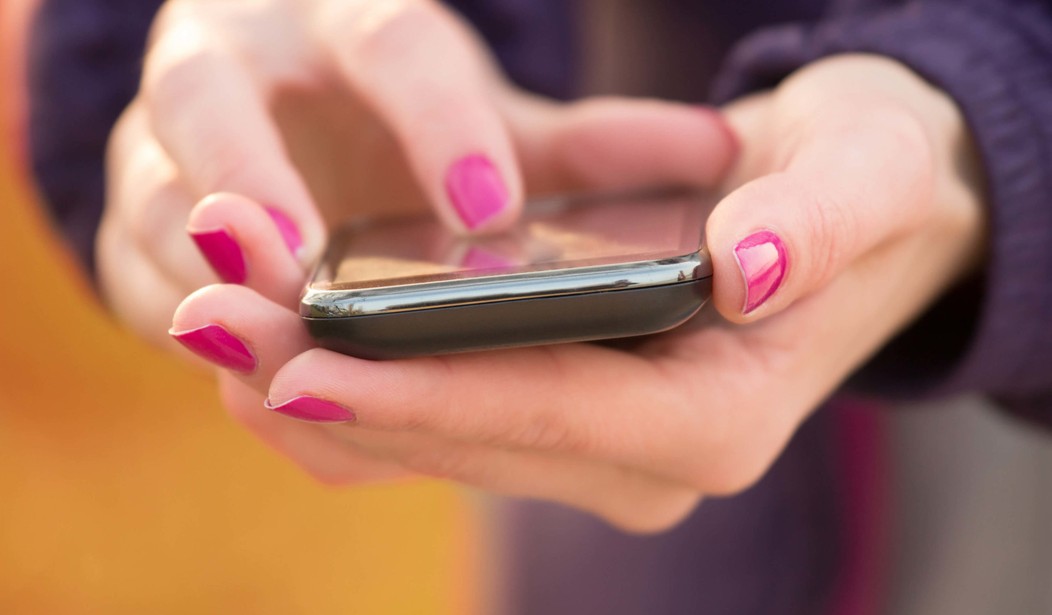Recently, Megan Fox asked parents to stop giving smartphones to 10-year-olds. I agree with the idea of delaying the introduction of technology as long as you can. That’s one of my standard pieces of new parent advice. However, simply declaring an age, say that 10 is too young, does not allow for reality.
There are many good reasons parents might give their child a cellphone at age 10 — and there are even more bad reasons. The fact remains, kids have cellphones at ten, and wishing otherwise is not all that helpful.
Conservatives make this mistake often. We see the best and preferred way to do something and advocate for that way, but then fail to address how to deal with less than perfect. My standard example of this is child custody arrangements. Best outcomes do statistically come from children who grow up in a household with a married mom and dad. But many children don’t, and declaring that it is too bad their parents didn’t stick it out doesn’t help the child. Asking parents to forgo giving children cellphones at age 10 doesn’t address how to deal with the reality that many have them now.
I won’t hide. My 11- and 13-year-olds have cellphones. Their 8-year-old sisters do not, although it is harder to hold back with younger siblings, so I expect they will have phones a little sooner than their brother and sister did.
Our earlier than planned adoption had a couple of sources. We lived overseas for five years and traveled back and forth in 8-10 hour flights three times each year. iPods saved many a passenger’s sanity on those trips. I generally managed to keep their use to travel days, but once the screen seal is broken, going back isn’t an option and proceeding slowly is more difficult.
Another reason for our early adoption was other kids. I expected a peer pressure problem. I was prepared to resist it and did. I did not anticipate, however, the school, the annoyance, or the education factors.
Schools increasingly put assignments online. Just last night my 3rd graders came home with sign-in info for a math games site for which their teachers monitor their time. I can let the girls use my computer or tablet, but I have twins and need my own devices for work and life administration. The 5th grade teacher has requested that her students bring their devices to school, as so much is online and the school cannot afford more or new devices.
Next page: Their friends are calling constantly.
The annoyance: their friends who had phones constantly called and texted mine — which leads to the education point.
Parents answer their own cellphones, and many homes don’t have landlines. There isn’t a need to yell to whoever is nearest the phone to answer it because it is probably in your pocket. Unschooled in phone etiquette, modern eight-year-olds called until they got a response.
Worse, I saw that just because parents delay getting cellphones does not mean their children will not use cellphones. Kids can send or receive naughty pics from a friend’s phone just as easily as they can from their own. Teaching them how to use a cellphone is an essential lesson modern parents cannot avoid.
Note well, I am not advocating a Get Real parent philosophy that sees kids run amok while adults linger nearby. I’m talking about a modified Good Parent strategy that gradually teaches kids to use their own judgement. Avoiding the problem, whether it is cellphones or the sex and drinking Caitlin Flanagan discusses in the Get Real link, does not teach children what to do when the problems confronts them sometime in their teens or twenties.
It is almost cruel to shelter them for 18 years and then throw them to the wolves of college or the working world. And as countless pieces on college life and millennial shortcomings attest, life isn’t going well for this cohort. It is our job as parents to adjust and prepare them.
So, between the annoyance of my device ringing or alerting me incessantly, the phone going missing in the house when the children walked off while talking to a friend, and the recognition that children needed to learn to use cellphones wisely while under our supervision, my two older children have cellphones.
Next page: Technology rules and helpers.
But we have some technology rules and helpers.
The biggest rule is, thankfully, the simplest. Kids check their devices in at night. Much of the mischief happens late at night when no adult might stumble upon an offense in progress. Plus, devices are addicting and training kids to put their devices away is a habit we should teach them.
Good habit formation also applies to mealtimes. No devices are allowed during meals.
This leaves the problem of monitoring all the other hours. My husband and I have tested many kid safety apps and systems. We’ve used the parental restrictions on Apple devices. (If you set parental restrictions and then forgot the code, email me. I know how to do those resets. Be warned, your kids will be upset because they will lose all game progress from time of last backup.)
About three years ago we splurged on a fancy router that allowed us to restrict Wi-Fi access. We could simply shut the kids’ Internet off at 9 p.m. But there were no restrictions in the wilds of the 4G or LTE network, or any other Wi-Fi network.
And then, this summer, my mommy wish arrived. It is called Circle by Disney. I think lots of parents had wished for such a device and Disney does keep up with what parents want, so it funded and branded the router when someone invented it.
Circle is a cube (why, I don’t know) that plugs into your router. It allows you to not only set app and website restrictions and Internet sleep times and hour limits, but also it lets you do this by device and by app. In practice this means that I can give my older two children more total hours on their devices, as they have to use them for school. I can limit them to less than an hour on time bandits like Snapchat, but allow them more time on Minecraft (digital Legos) or reading apps.
It controls anything on Wi-Fi. So my son’s X-Box is circled. No more gaming marathons on the weekend, and no more yelling at him that his time is up. The Wi-Fi to the box simply shuts off once he hits the time limit. Our AppleTVs are circled. I know a few adults who bought it for themselves, to set social media limits so they don’t fall down a Facebook rabbit hole.
My husband and I had managed some of this with the fancy router. Here is what sold me. Circle offers a subscription service, Circle Go, that keeps all your safeties and logs your kids’ hours even when they are out of the house. The standard trick kids learn, to turn off Wi-Fi and go on the network? That no longer works with Circle Go.
Circle costs 99 bucks (the fancy routers cost much more) and takes about an hour to set up properly. You monitor it from your own phone or tablet. Circle Go is a little more of a pain to set up because you have to add the app on each device you want monitored remotely. But it is by far the best restriction device out there.
Between Circle and the common sense family rules, we’ve had a lot less family strife over technology. Well, until 5th grade daughter’s laptop got stepped on at school last week. I spent lunchtime yesterday at our local Genius Bar. Modern motherhood is not what I expected. But then what in life is?









Join the conversation as a VIP Member